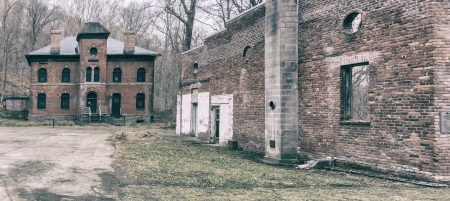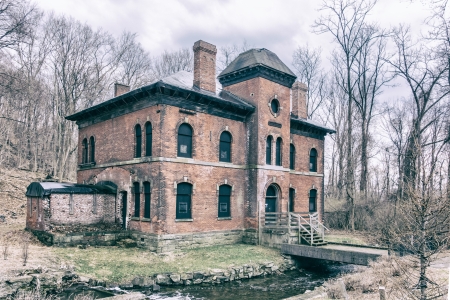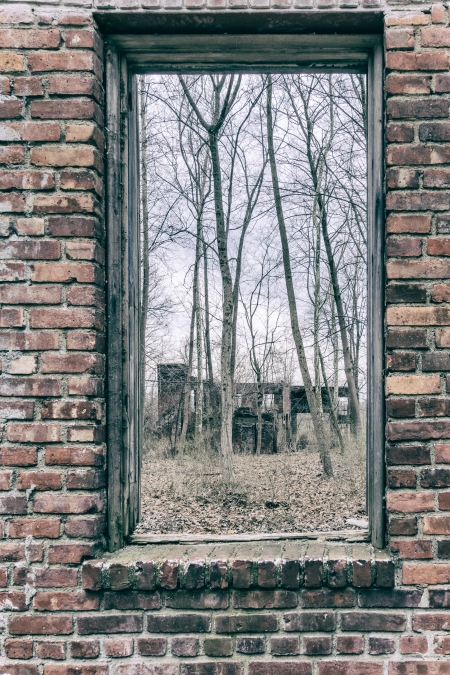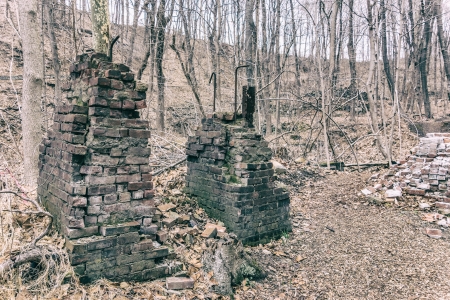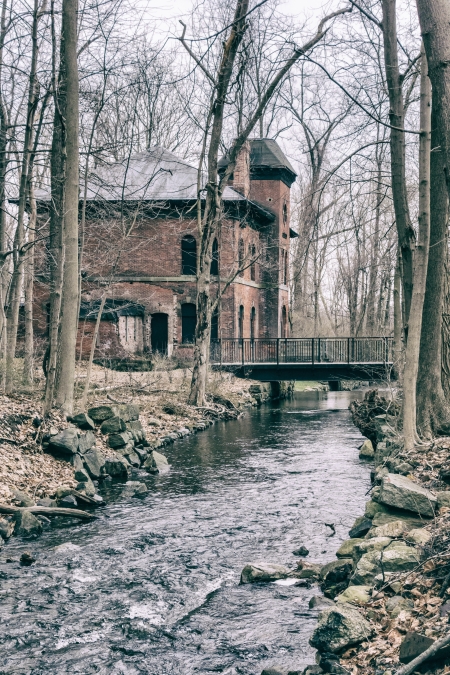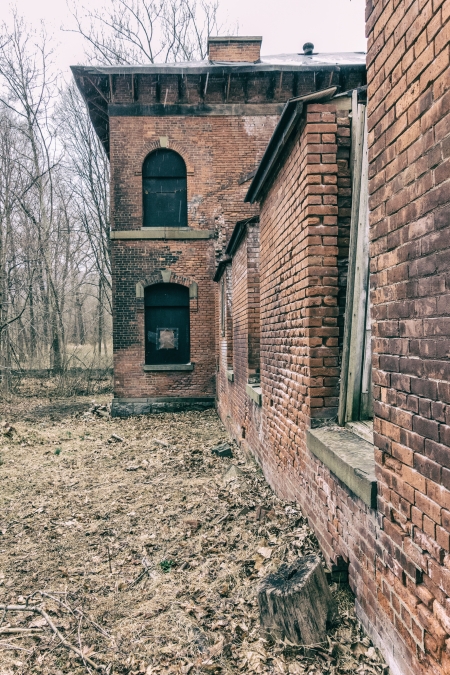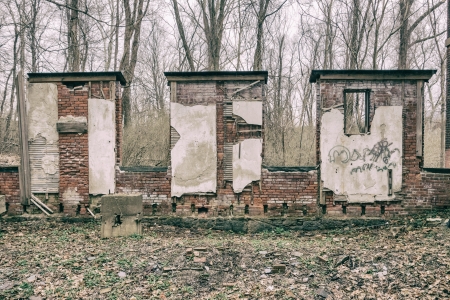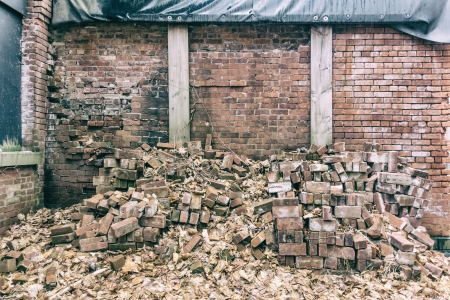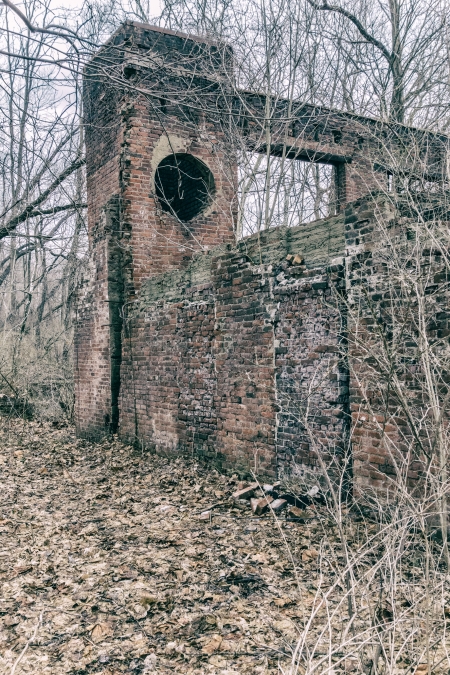The Old West Point Foundry. It was a wet day – not raining hard, but a constant drizzle. The kind that gets you wet. I almost didn’t go. It was about 3:30 by the time I was finished doing other essential things and the weather was grey and gloomy, but not yet raining. The dog needed his walk, so I thought – what else am I going to do? So off we went. Saw (and heard) some red headed woodpeckers. Jackson caught the scent of something in the ruins and I heard something moving. Sounded quite big – maybe a raccoon. On the way out we had an encounter with four deer. They didn’t rapidly disappear into the undergrowth as they usually do. Instead they would run away about fifteen feet and stop. We’d approach and they’d run away about 15 feet again. Of course Jackson liked this as they stayed around for quite a while. I tried to take a picture of them, but it was impossible while holding Jackson on the leash. He was running and jumping all over the place. I couldn’t hold the camera steady. I stopped in at ‘The Depot’ in Cold Spring for a pint afterwards and then we went home.
The Foundry Preserve as interesting. Wikipedia states:
The West Point Foundry was an early ironworks in Cold Spring, New York that operated from 1817 to 1911. Set up to remedy deficiencies in national armaments production after the War of 1812, it became most famous for its production of Parrott rifles and other munitions during the Civil War, although it also manufactured a variety of iron products for civilian use. The rise of steel making and declining demand for cast iron after the Civil War caused it to gradually sink into bankruptcy and cease operations in the early 20th Century.
It was large and most of the population of Cold Spring must have been employed there. After the Foundry closed the town almost died until it re-invented itself a picturesque riverside tourist destination.
Most of the pictures are of the old administration building, the only fairly intact structure still standing. There are bricks everywhere though showing how extensive the Foundry was in its heyday.

